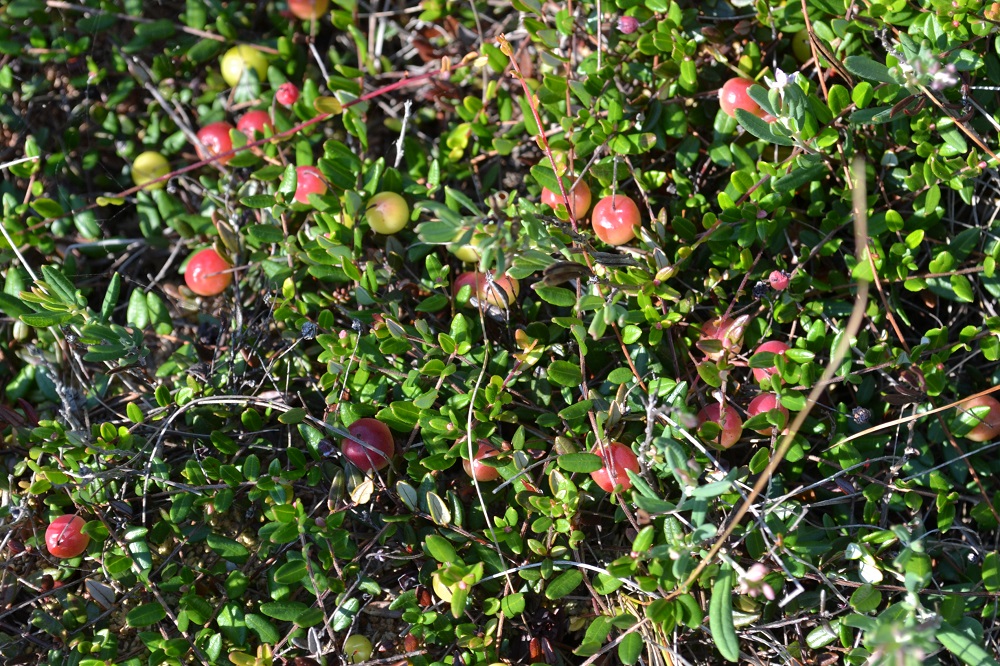Photography: Sergei Gapon for UNDP in Belarus
Ten million dollars a year is the cost of ecosystem services of Zhada bog in Belarus.
The restoration of the drained Zhada bog in the Vitebsk region of Belarus could bring in more than US$10 million of profit a year. This is the approximate cost of the bog’s social and environmental services, which Zhada provides to the environment and people. Though, there is one very important condition - this is possible only if all natural functions of the bog are restored and working.
At the end of 2020, UNDP-Ministry of Natural Resources project "Sustainable Management of Forest and Wetland Ecosystems to Achieve Multi-purpose Benefits (Wetlands)", funded by the Global Environment Facility (the GEF), has completed the hydrology restoration at Zhada bog on about 5,000 ha. Hopes rise that the first signs that the damaged ecosystem is returning back to life can be visible in just five years.
Zhada is a raised bog located in the north-east of Belarus on the territory of two districts of the Vitebsk region - Miorsky and Sharkoushchinsky. It is a part of the Republican Wetlands Nature Reserve "Zhada".
96% of the entire territory of "Zhada" was subjected to human intervention.
Back in the early twentieth century, a local landowner ploughed trenches to drain the largest lake in the center of the bog to transform it into hayfields. Then, in the 1970s, a dense network of drainage canals scared across the western part of the bog in an ill-fated effort to plant a pine forest there. The trees did poorly, and the whole endeavor had a zero economic profit and impacted the environment severely. Further, about 300 ha were drained in the eastern part of the bog for peat extraction.
The peat extraction site in the eastern part of the bog damaged significantly the bog’s water table and the ecosystem, since the surface of the site was 1.5 m below the surface of the bog after peat extraction.
More attempts to drain the bog took place in the 1990s. Management of the local collective farm made an individual decision to plough a canal from Lake Strechno, along which water continues to flow out of the bog till today.
As a result of all these interventions, Zhada’s natural hydrology changed, and the most critical ecological functions of the bog were disrupted. The peatland stopped storing moisture and supplying water to streams and small rivers; its carbon dioxide absorbing functions ceased, the peat began to dry out, the area of cranberry fields decreased, and the risk of peat fires increased significantly. The conversion of the drained bog for forestry and peat extraction did not pay off.
The drop in water levels had a negative impact on wildlife and vegetation. The once abundant biodiversity of the area became significantly poorer. Open areas of the bog became gradually overgrown with pine forests, and the composition of animal and plant species changed.
Peat fires can burn for 20-25 years.
The desiccation and overgrowth of the bog with heather have turned it into a “powder keg”. The smallest spark can put the whole area on fire. When peatlands burn, they are almost impossible to put out. During dry years they can last for a very long time because fire not only touches surface of a peat deposit, but also, in the absence of moisture, penetrates its deep layers. Some peat fires had been burning for 20-25 years. The most severe fires swept through Zhada bog in the early 2000s.
In addition to the damage to biodiversity, peat fires cost the economy dearly. Putting out one hectare of burning peatland costs about US$ 3,200. The average fire burns on about 400 ha, so the damage from just one peat fire can amount to US$ 1,200,000.
The raised bogs are valuable economic resource for local people.
Before it was drained, Zhada bog was the largest wild cranberry field in the region. Despite the damage done to the bog’s hydrology, Zhada remains a popular place among local communities for gathering mushrooms and wild berries. Experts estimated cranberry reserves in 2017 at 139.1 tons/year (freshly harvested), and the value of the entire biological stock was (in prices of 2017) US$ 171.2 thousand a year.
Restoration of the hydrological cycle will revive the importance of raised bogs as a source of income for local populations from cranberry harvesting.
Nature-based solutions are at the heart of peatlands rehabilitation strategy.
The strategy for restoring inefficiently drained peatlands builds on nature-based solutions and includes blocking up drains that carry water out of a bog. Building a cascade of dams made of peat or local soil blocks the drainage canals and allow the original water levels to return.
The cascade of soil dams blocked main drainage canals and raised water levels to the bog’s surface.
Despite the simplicity of re-wetting solution, this technology has no analogues today in terms of efficiency and cost. Saturating the peat layer with moisture helps significantly reduce the risk of peat fires during hot seasons and, thus, cut the potential costs of firefighting and fire prevention.
The rewetting also benefits wildlife, supports restoration of populations of rare and endangered species and their habitats. Today, the Zhada Nature Reserve is a home to 144 animal 348 plant species, including seven species listed in the Red Book of Belarus. 60.4 per cent of the habitats, located in the reserve are protected.
A healthy bog is a new opportunity for local economic growth.
Restoration of biological diversity makes the Zhada bog attractive for the development of nature tourism. The reserve is located quite far from the main district centers and it can hardly be called a popular tourist destination yet. However, there are all conditions for this in place, including the desire of local communities to facilitate the development of the local tourist infrastructure. For instance, the Disna Forestry began designing new eco-tourist routes, some of which run directly through the bog. Visitors will be offered to watch a large population of beavers on one of the canals, as well as to visit grouses' mating grounds.
A large grouse mating site is preserved at the bottom of the drained lake.
With the support from UNDP and the funding from the Polish Aid Programme of the Ministry of the Polish Foreign Ministry, a European-class camper camping site "Mereya" has been renovated and is already in use very close to Zhada bog.
Zhada’s revival will also contribute to increasing the fish productivity of the nearby Strecno and Ilovo lakes.
This will give impetus to another promising area of tourism – amateur angling.
However, when developing eco-routes, it is necessary to avoid mistakes such as those made at the neighboring Yelnya bog – a very popular tourist destination.
There, the constant use of 4x4 off-road vehicles to transport tourists has led to the formation of a network of deep ruts, through which water escapes from the bog as through drainage canals.
Nature-based technologies - low cost and high productivity.
Water is an important strategic resource. Raised bogs have a unique natural function to purify water. Experts have calculated that one ha of Zhada bog filters 685 m3 of water per day. This is comparable to the filtering capacity of an industrial water purification plant. The total cost of all water in the bog is estimated at US$1,617,200 and its filtration services cost US$1,808,000 per year.
The rehabilitation of the damaged Zhada bog completed a series of restoration efforts undertaken by UNDP, the GEF, Belarus’ Ministry of Environment aimed at returning to health of 12,456 ha of inefficiently drained peat bogs in Belarus. A total of five project areas have been re-wetted between 2019 and 2020. The restored areas are expected to help reduce carbon dioxide emissions by 3,200,000 tons over 20 years period.
The large-scale rehabilitation of drained peatlands is part of Belarus' national contribution to the Convention to Combat Desertification, the Ramsar Convention, the UN Framework Convention on Climate Change and the Convention on Biological Diversity.

 Locations
Locations












